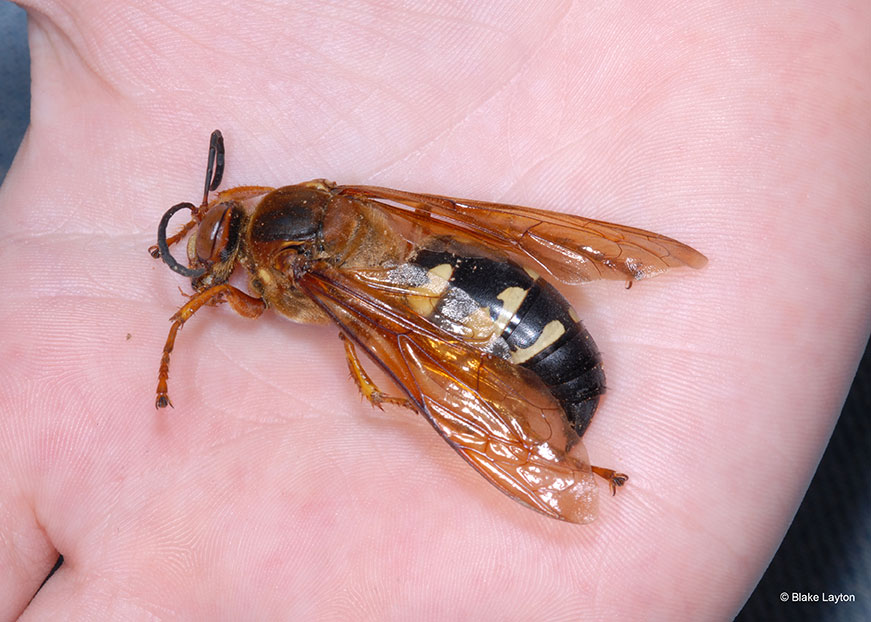Cicada Killer Wasp | Vol. 3, No. 21

Sphecius speciosus
Order: Hymenoptera
Family: Crabronidae
Cicada killers are the largest wasps in the state. A big female can be over two inches long, and all female cicada killers are able to capture cicadas and fly off with them! Seeing one of these large wasp flying back to her nest with her prey is an impressive sight. How do they ever get off the ground with a load like that? The ones I’ve watched have dragged the cicada four to six feet up the trunk of a tree or some other vertical structure and then launched with their load.
Cicada killers can sting. In fact, they have an impressively large stinger they use to paralyze the cicadas they capture. Fortunately, these solitary wasps are not aggressive and rarely sting humans. You pretty much have to grab one in your hand to force a sting. The females nest in burrows they dig in protected sites, such under shrubs, large tree roots or concrete slabs. Then they go catch cicadas, paralyze them with a precisely placed sting, bring them back to the burrow, and lay an egg on them. A single brood cell may contain from one to three cicadas, and adult cicada killers vary considerably in size, depending on how many cicadas they had to eat as larvae.
Cicada killers are neither pests, nor beneficial insects. They rarely harm people and the annual cicadas they feed on do not significantly harm trees. Occasionally, a homeowner or golf course manager may be concerned by unusually large numbers of cicada killers flying about an area. Usually these are males patrolling the area for females. Male cicada killers certainly look intimidating, but male cicada killers can’t sting because they do not have a stinger. Adult cicada killers are usually active from mid-summer through fall. Their life cycle matches that of the annual cicadas they depend on for prey. They do not prey on periodical cicadas, which only occur every thirteen years and emerge in the spring, well before adult cicada killers are out.
You might not think a wasp this large would have any natural enemies, but cicada killers are parasitized by velvet ants, which are the large, red and black, wingless wasps one sometimes spots scurrying across the ground. They’re looking for bumble bee nests or cicada killer burrows. Female velvet ants invade cicada killer burrows and lay their eggs in developing cicada killer pupae.
Blake Layton, Extension Entomology Specialist, Mississippi State University Extension Service.
The information given here is for educational purposes only. Always read and follow current label directions. Specific commercial products are mentioned as examples only and reference to specific products or trade names is made with the understanding that no discrimination is intended to other products that may also be suitable and appropriately labeled.
Sign up to receive Bug's Eye View.

